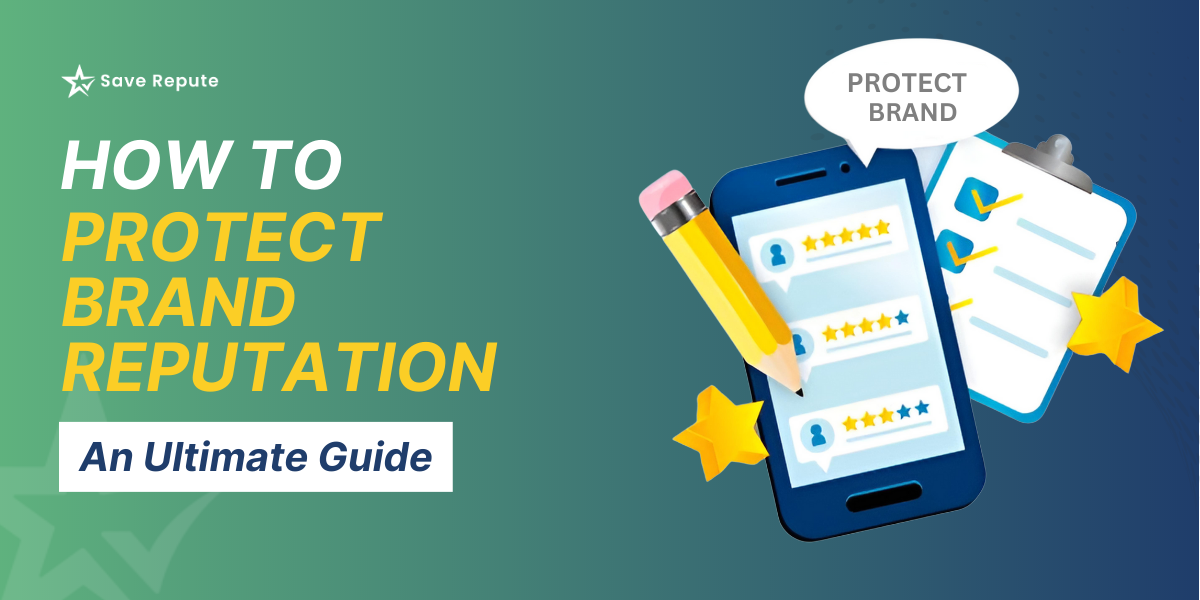One of a company’s most valuable assets is its brand reputation. An organisation can stand out from rivals and draw in new clients by maintaining a positive reputation.
But a crisis or adverse event can quickly harm a company’s reputation, so it’s critical for businesses to have protect brand reputation management plans in place. The best practises for maintaining a brand’s reputation are covered in the following article.
Table of Contents
How to Protect Brand Reputation: 12-Steps Guide
Build a Strong Brand Foundation
Establishing a strong brand foundation is the first step in protect brand reputation. This entails developing a distinct brand message, set of core beliefs, and mission statement that are in line with the objectives of the business and appeal to its target market. A strong brand foundation can contribute to customer credibility and trust, decreasing the likelihood that a negative incident will damage the brand’s reputation.
Monitor Online Conversations
Monitoring online conversations is crucial for a brand to maintain its reputation. In order to stay on top of any unfavourable remarks or reviews, businesses should routinely monitor social media platforms, review websites, and other online platforms. This makes it possible for companies to react to unfavourable criticism quickly and effectively, thereby reducing the damage to their reputation.
Respond to Negative Feedback
A company’s reputation is based on how it responds to criticism. Companies should address customer complaints and provide a solution in their prompt, professional responses to negative comments or reviews. By doing this, businesses can show that they value customer feedback and are dedicated to offering top-notch customer service.
Be Transparent
The secret to maintaining a brand’s reputation is transparency. Businesses should be Protect Brand Reputation open and honest about their operations, goods, and services. Customers should be informed at every step of the process, and any problems or issues should be fixed as soon as possible.
Have a Crisis Management Plan
Negative incidents or crises can happen despite our best efforts. Businesses can respond to negative events quickly and effectively with the help of a crisis management plan, minimising the damage to their reputation. Roles and responsibilities, communication protocols, and actions to be taken in the event of a crisis should all be specified in a crisis management plan.
Invest in Employee Training
Employees can play a significant part in maintaining a brand’s reputation, so investing in employee training makes sense. Investing in employee training makes sure that staff members are aware of the company’s values and mission and are equipped to deliver first-rate customer service. In order for staff to react appropriately in a crisis, they should also receive training in media relations and crisis management.
Monitor Competitors
The reputation of a brand can be preserved by keeping track of competitors. Businesses ought to be aware of what their rivals are doing and saying, and they ought to be prepared to act if necessary. By keeping an eye on competitors, businesses can spot areas for development and anticipate market trends.
Monitor Social Media
On social media sites and online forums, users and customers express their opinions about goods, services, and brands. The identification of potential problems and unfavourable comments that need to be addressed can be aided by keeping track of these conversations. Sprout Social, Hootsuite, and Google Alerts are a few examples of tools that can be used to keep an eye on online conversations and social media.
Respond Promptly And Transparently To Customer Feedback
You must react swiftly and openly to any complaints or unfavourable comments. Recognize the issue, extend an apology if necessary, and provide a resolution or justification. This demonstrates the company’s commitment to resolving issues and value for its clients.
Engage With Customers And Stakeholders
Using social media, email, or other channels to communicate with customers and stakeholders can help build a solid online reputation management. The positive perception of the brand can be enhanced by responding to questions and comments, providing helpful information, and asking for feedback.
Train employees
The reputation of a brand can be significantly impacted by employees. Employees can serve as brand ambassadors and deliver a consistent customer experience if they have received training on the organization’s values, messaging, and customer service.
Conclusion:
Protecting a brand’s reputation is essential for its success and longevity. By putting into practise a number of strategies, including keeping an eye on online conversations, responding to customer feedback, engaging with customers, training employees, and having a crisis management plan in place, a brand can protect its reputation and maintain a favourable image in the eyes of its stakeholders.


